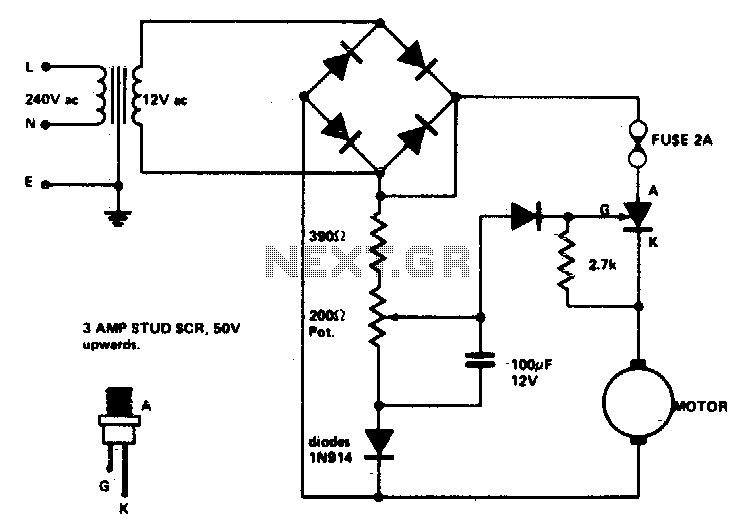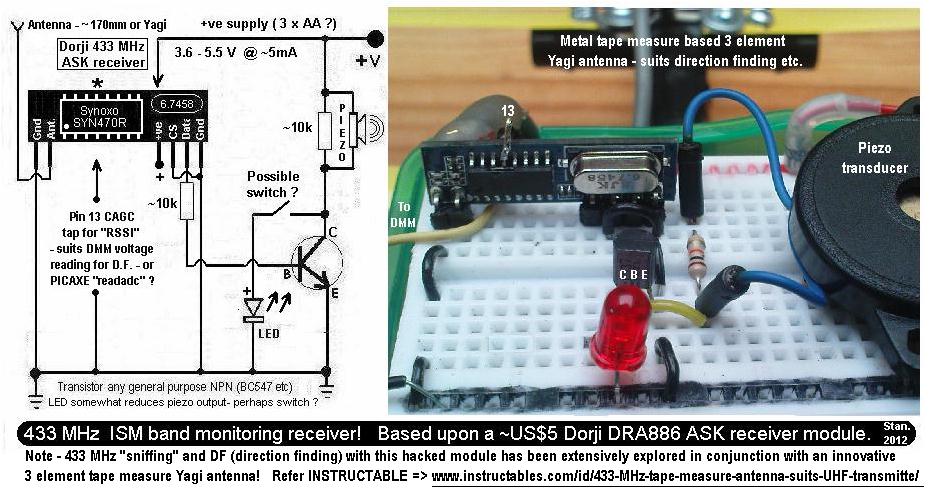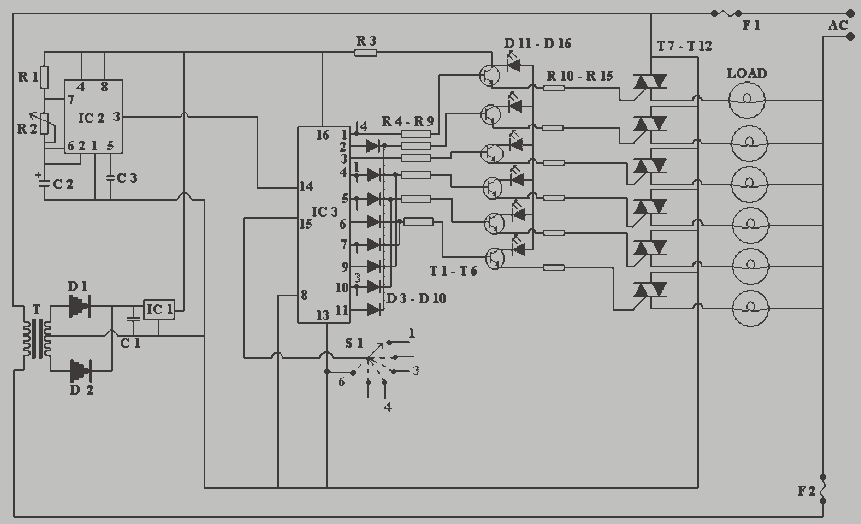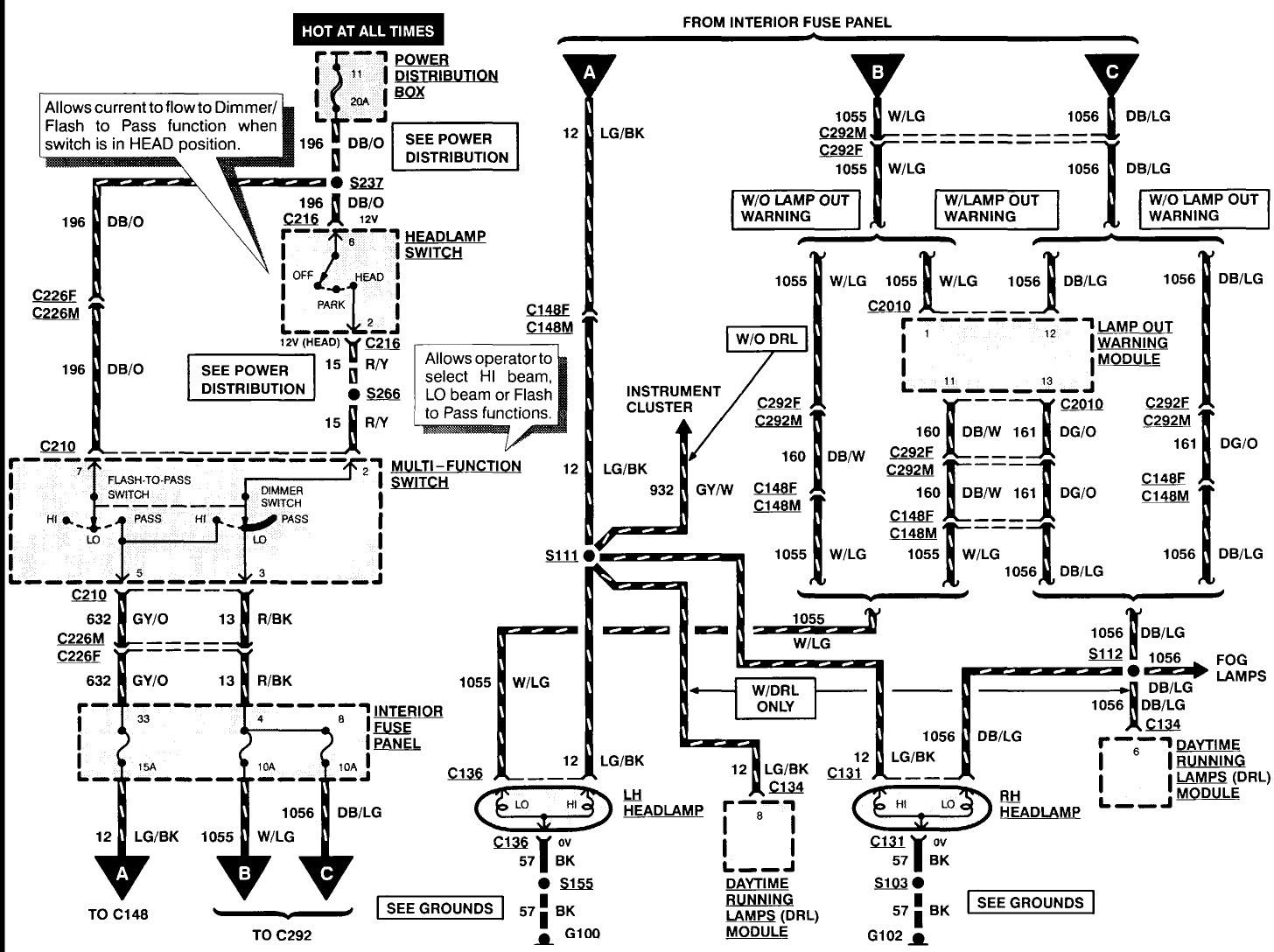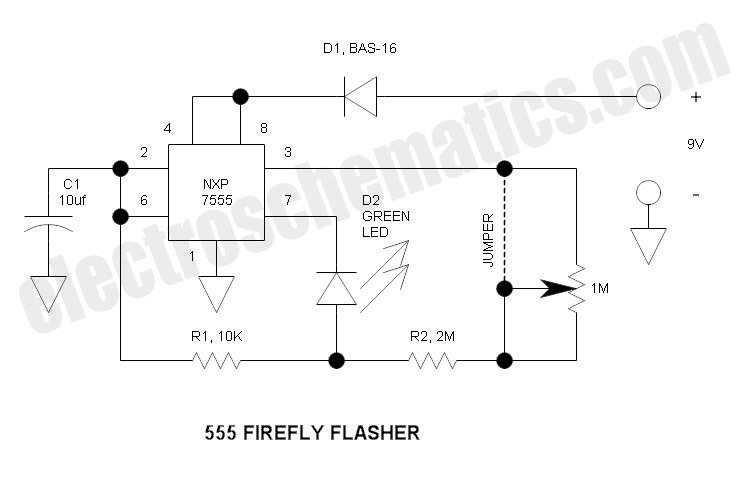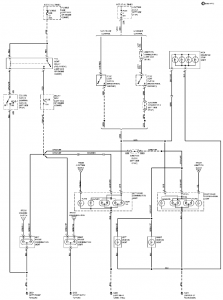
Knightrider lights for model cars
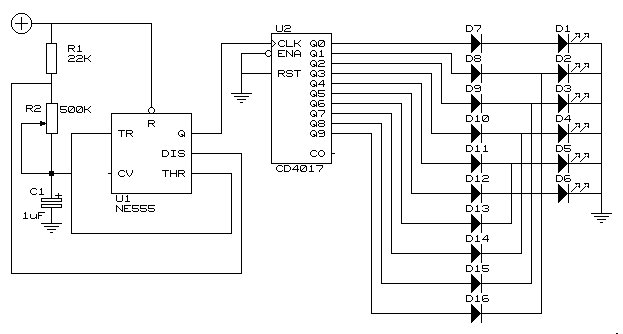
This circuit operates six LEDs in a "Knightrider scanner mode." The power consumption is primarily influenced by the type of LEDs utilized, especially when employing a 7555 (CMOS version of the 555 timer). Caution is advised when working with electricity, particularly with high-voltage diagrams, as there is a risk of injury or damage. The success of building devices using these diagrams is not guaranteed, and they have not been tested. For inquiries regarding the diagrams, please refer to the author's information provided below the diagram or visit the contact page.
The circuit for the Knightrider scanner mode employs a 555 timer IC, specifically the CMOS variant (7555), which is known for its low power consumption and versatility in timing applications. The configuration typically used is astable, generating a square wave output that alternates the LEDs in a sequential manner, creating a visual effect reminiscent of the iconic "KITT" scanner from the television series.
The circuit consists of six LEDs arranged in a linear fashion. Each LED is connected in series with a current-limiting resistor to prevent excessive current flow, which could damage the LEDs. The output from the 7555 timer drives a series of flip-flops or a decade counter, which sequentially activates each LED in a specific order, producing the desired scanning effect.
The power supply for the circuit can vary depending on the LED specifications and the design requirements; however, a common voltage range is between 5V and 15V. It is crucial to select appropriate resistors to ensure that the current through each LED does not exceed its rated specifications, typically around 20 mA for standard LEDs.
For enhanced functionality, additional components such as capacitors may be included to stabilize the voltage and improve the timing accuracy of the 555 timer. The choice of LEDs can also affect the overall power consumption and brightness of the display, making it essential to consider the forward voltage and current ratings of the selected LEDs when designing the circuit.
Safety precautions should be observed when assembling and testing the circuit. Proper insulation, the use of breadboards or prototyping boards, and adherence to standard electrical safety practices are recommended to minimize the risk of electric shock or damage to components.This simple circuit drives 6 LEDs in `Knightrider scanner mode`. Power consumption depends mainly on the type of LEDs used if you use a 7555 (555 CMOS version). We are not responsible for any injuries or damage caused by information from this website! Working with electricity is dangerous for your life, especially diagrams related to high voltage! We do not guarantee success in building devices using our diagrams! They are not tested by us. For questions about diagrams use author info below diagram or our contact page. Thank you! 🔗 External reference
The circuit for the Knightrider scanner mode employs a 555 timer IC, specifically the CMOS variant (7555), which is known for its low power consumption and versatility in timing applications. The configuration typically used is astable, generating a square wave output that alternates the LEDs in a sequential manner, creating a visual effect reminiscent of the iconic "KITT" scanner from the television series.
The circuit consists of six LEDs arranged in a linear fashion. Each LED is connected in series with a current-limiting resistor to prevent excessive current flow, which could damage the LEDs. The output from the 7555 timer drives a series of flip-flops or a decade counter, which sequentially activates each LED in a specific order, producing the desired scanning effect.
The power supply for the circuit can vary depending on the LED specifications and the design requirements; however, a common voltage range is between 5V and 15V. It is crucial to select appropriate resistors to ensure that the current through each LED does not exceed its rated specifications, typically around 20 mA for standard LEDs.
For enhanced functionality, additional components such as capacitors may be included to stabilize the voltage and improve the timing accuracy of the 555 timer. The choice of LEDs can also affect the overall power consumption and brightness of the display, making it essential to consider the forward voltage and current ratings of the selected LEDs when designing the circuit.
Safety precautions should be observed when assembling and testing the circuit. Proper insulation, the use of breadboards or prototyping boards, and adherence to standard electrical safety practices are recommended to minimize the risk of electric shock or damage to components.This simple circuit drives 6 LEDs in `Knightrider scanner mode`. Power consumption depends mainly on the type of LEDs used if you use a 7555 (555 CMOS version). We are not responsible for any injuries or damage caused by information from this website! Working with electricity is dangerous for your life, especially diagrams related to high voltage! We do not guarantee success in building devices using our diagrams! They are not tested by us. For questions about diagrams use author info below diagram or our contact page. Thank you! 🔗 External reference
